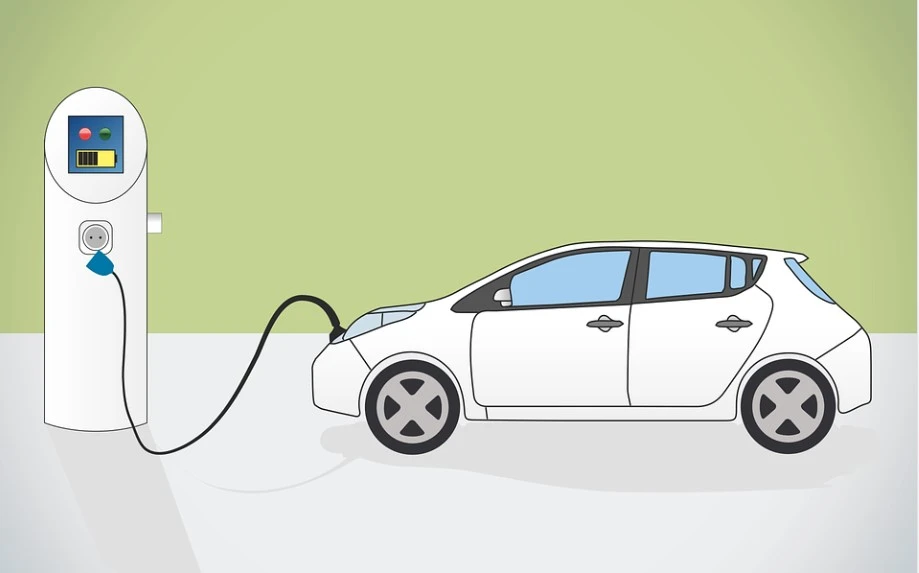Ready, Set, Charge!

If you are one of the many who has opted for an EV for whatever reason, then the time will come when you have to charge it up – just like you have to charge up your phone, e-reader or laptop. However, charging an EV is not quite the same as filling up a petrol or diesel tank, and if you’ve never done it before, there are a few things that you’ll have to get used to, especially regarding the different charging speeds.
Deep breath required here. There will be maths.
With all types of charging, the exact amount of time you’ll need to charge the battery will depend on the voltage of the outlet and the battery capacity. The formula for working it out is:
E = P × t
Makes you feel a bit like Einstein, saying that. E is energy, P is power and t is time. Rearrange this and you get t = E/P or, in plain language:
Your EV’s battery capacity (in kWh) ÷ power output of the charger (in kW) = hours of charging time

This equation, however, mainly applies to charging to 80% rather than 100% (and this is the charge time figure that you’ll see in specs and stats from the manufacturers of EVs). This is because charging isn’t a linear process and it slows down as the battery gets closer to full charge. It’s a mechanism that helps prevent overheating. If you want to charge to 100%, bear in mind that doing so will take a bit longer.
The thing that most people are concerned about is the charging speed. In fact, the charging times are one factor that can put people off purchasing an EV, especially an all-electric BEV or a PHEV. Here in Australia, we have reasonably sensible names for the different charging speeds, unlike in other countries, where you have to ask a few questions to be sure what you’re talking about during a discussion of fast charging – you’ll hear some people talk about fast charging as something different from rapid charging (I feel sorry for those who don’t speak English as their first language because – well, you try explaining the difference between fast and rapid!). Here, we keep things straightforward, calling the two most common charging speeds Level 1 and Level 2, with only the fastest type being called “DC fast charging”.
Level 1 charging is simplest type of top-up charging that you can do at home or anywhere else you can access a standard common or garden power socket. It seems very simple but the trouble is that this type of charging is very, very slow. Recharging a completely drained battery will take at least a whole day, as in a 24-hour day. It could even take 48 hours, which is fine if you’ve got the whole weekend to recharge your car’s batteries as well as your own and don’t have to go anywhere. On the other hand, if you find yourself at a relative’s place in the country and not enough charge to get you home, you can just plug in and recharge enough to get you home again, or at least to the nearest public charging station (it would be nice if you compensate your relative for the power you’ve used, same as if they let you have a jerrycan of petrol if you’d run out). You may hear this referred to as trickle charging.
Level 2 charging is the sort of charging you do with one of those wall boxes in your home, and Level 2 chargers are what you’ll find in typical public chargers of the kind you’ll see at the supermarket, mall or gym and, if you’re really lucky, at work. Typically, you get around 7.2 km of mileage for every 10 minutes of charging with a 7.2 kW unit, or 22 km of mileage for every 10 minutes with 22 kW charging. (Is anybody else getting flashbacks to the sorts of word problems we had to solve at school?)
However, remember that these mileage figures are approximate and are under ideal conditions. If you have a heavy load, if you have to go into a headwind, or if you want to run the lights or heaters or play music, you’ll reduce the range.
Commercial outlets will often provide chargers not just for their customers’ convenience (although this is certainly part of their motivation) but also as a marketing ploy. If you need to ensure that you’ve got enough charge in your battery to get you home again after work and shopping, then you may need a couple of hours to charge the battery to the right level. However, it may take you only one hour to do your workout at the gym or to pick up your groceries, leaving you with time to kill. Chances are that you’ll spend time in the gym cafeteria or that you’ll spend a bit longer in the supermarket browsing the shelves to fill in the time and will thus spend more money, which is what the commercial outlets are hoping for. Just be aware of this little ploy and budget for it, develop some iron self-discipline and a healthy bit of patience, or take a book. Just don’t make the mistake of sitting in your car doing things on your phone or laptop with your device plugged into the charger in the car!
Speaking of budgets, a home wallbox will have to be bought separately when you buy a new EV. It’s a good idea to buy one, as otherwise you’ll be relying on super-slow trickle charging or public charging stations to top up the battery. It will also need to be installed by a professional electrician, like your oven or hot water cylinder and for the same reasons. You’ll also have to factor the cost of labour in as well. This is something to keep in mind.
DC fast charging (aka rapid and ultra-rapid charging) uses DC electricity, whereas Levels 1 and 2 use AC electricity. The best known DC chargers are the Tesla superchargers even though, ironically, the original Nikola Tesla promoted and popularized the use of AC electricity. How fast this type of charging will be will depend on the battery, but charging can be done in less than an hour, depending on the kW rating and the type of car. Some EVs charge faster than others. It has to be remembered that not all EVs are compatible with DC fast charging; this is often the case with PHEVs. This is something to check and think about when you buy an EV.
It’s also important to understand the different types of connectors or plugs, but that’s another story for another time.